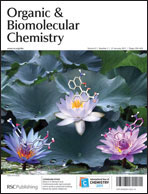
Cyclophanes can be rationally designed by choosing the right components, similar to Lego® bricks. However, the features of these ‘lego bricks’ required to build the desired cyclophanes with the requisite biomolecular recognition properties have not been widely explored.
Now, Danaboyina Ramaiah and colleagues at NIIST in India have revealed some of the features to bear in mind when designing cyclophanes. They concluded by saying that that the cavity size and its rigidity, the aromatic surface and nature of bridging units dictate the stability of the supramolecular complex and thereby govern the biomolecular recognition properties of cyclophanes.
You can now download this article, which is free to access until mid-March.
Study of cavity size and nature of bridging units on recognition of nucleotides by cyclophanes
Prakash P. Neelakandan, Paramjyothi C. Nandajan, Baby Subymol and Danaboyina Ramaiah
Org. Biomol. Chem., 2011, 9, 1021-1029
DOI: 10.1039/C0OB00673D, Paper











 Gangadhar J. Sanjayan and his team at the National Chemical Laboratory in Pune, India, write about the development of conformationally constrained unnatural aromatic amino acids in this communication that is the cover of OBC
Gangadhar J. Sanjayan and his team at the National Chemical Laboratory in Pune, India, write about the development of conformationally constrained unnatural aromatic amino acids in this communication that is the cover of OBC